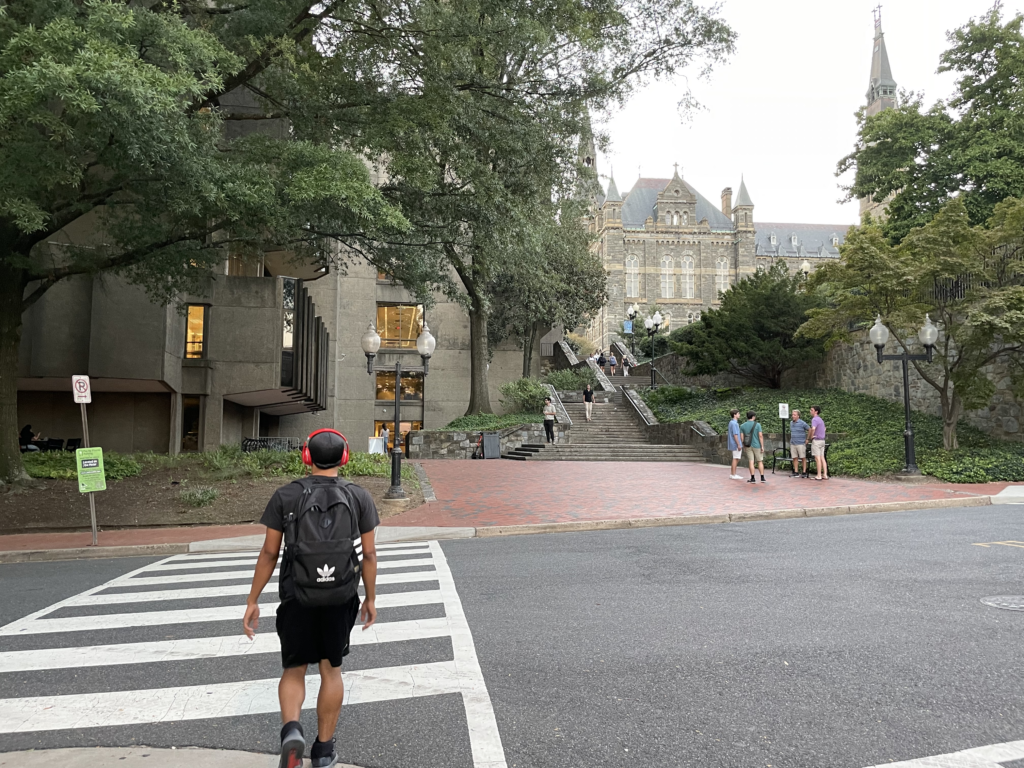Sophomore students report feeling isolated and excluded after arriving at Georgetown University with few official orientation events for the Class of 2024.
Due to the virtual 2020-21 academic year, incoming sophomores and transfer students did not experience a traditional New Student Orientation. The university hosted the Summer Hilltop Immersion Program, a five-week on-campus residential and academic experience designed for rising sophomores and incoming transfer students, in July. However, the program was optional, and 800 of the roughly 3,000 students in the Class of 2024 attended, leaving over 2,000 students arriving on campus for the first time this fall.

The Class of 2024 experienced a virtual NSO in fall 2020 after the university moved to remote operations because of the COVID-19 pandemic. Students reported technical glitches and communication barriers in the virtual environment that hindered programming.
Jenna Thomas (COL ’24) reported feeling excluded from campus life after arriving without a formal orientation.
“I don’t know the solution, but it’s definitely weird because I definitely felt very isolated coming here even though I was technically a sophomore,” Thomas said in an interview with The Hoya.
NSO did not have the time or capacity to plan a second orientation for rising sophomores, according to NSO Student Coordinator Brendan Omaña (SFS ’23).
“Planning NSO for just one class of new students is a very large undertaking, and our team just did not have the bandwidth to coordinate both this fall’s NSO and develop programming for last year’s new students,” Omaña wrote in an email to The Hoya.
Thomas, who did not attend SHIP, reported feeling left out of the social aspect on campus.
“It was very easy for me to figure out where everything is, but in terms of just socially I feel like everybody has these set friend groups, and it’s very hard to make a good group of friends that isn’t already preestablished,” Thomas said.
While sophomores and transfer students did not experience exclusive in-person NSO programming, the university did host a New Student Convocation for the Class of 2024 on Cooper Field.
According to Bridgitte Isom (NHS ’24), the convocation was not enough to orient incoming sophomores who did not attend SHIP.
“I think it would have been beneficial to have had maybe an afternoon of orientation to help us know where buildings are located and how to take advantage of the resources that are present on campus, like, what’s available at the library, the career center, how can we get medical care if we needed,” Isom said in a Zoom interview with The Hoya. “Both things like that, that you wouldn’t know how to do right off the bat when you’re living on campus.”
The university has also marketed Georgetown Weeks of Welcome, six weeks of large-scale programming designed to welcome new students, to the Class of 2024 in particular, according to a university spokesperson.
“These events are designed to help students connect to Georgetown traditions, the campus community, the broader community, and each other,” the spokesperson wrote in an email to The Hoya.
Isom, who also did not attend SHIP, said she has struggled adjusting to the demands of an in-person college experience after completing her first year virtually.
“I feel as though if I had done SHIP I would have been able to get used to those daily interruptions that come with communal life on campus, while balancing studying and socializing,” Isom said. “And then that would have primed me for more ease of the transition right now, because right now I’m kind of going through a little bit of a rough learning curve.”
Despite not having an in-person orientation, Isom said she has felt generally supported in her transition to campus life so far.
“People have just been so kind, so supportive overall,” Isom said. “If I had a question about something, I didn’t know how to figure something out, I always know who to turn to, which has been really lovely.”






















Dhakdbw • Sep 15, 2021 at 10:00 am
There are not 3,000 sophomores. The number is around 1,650 as always